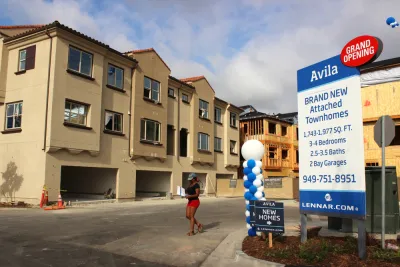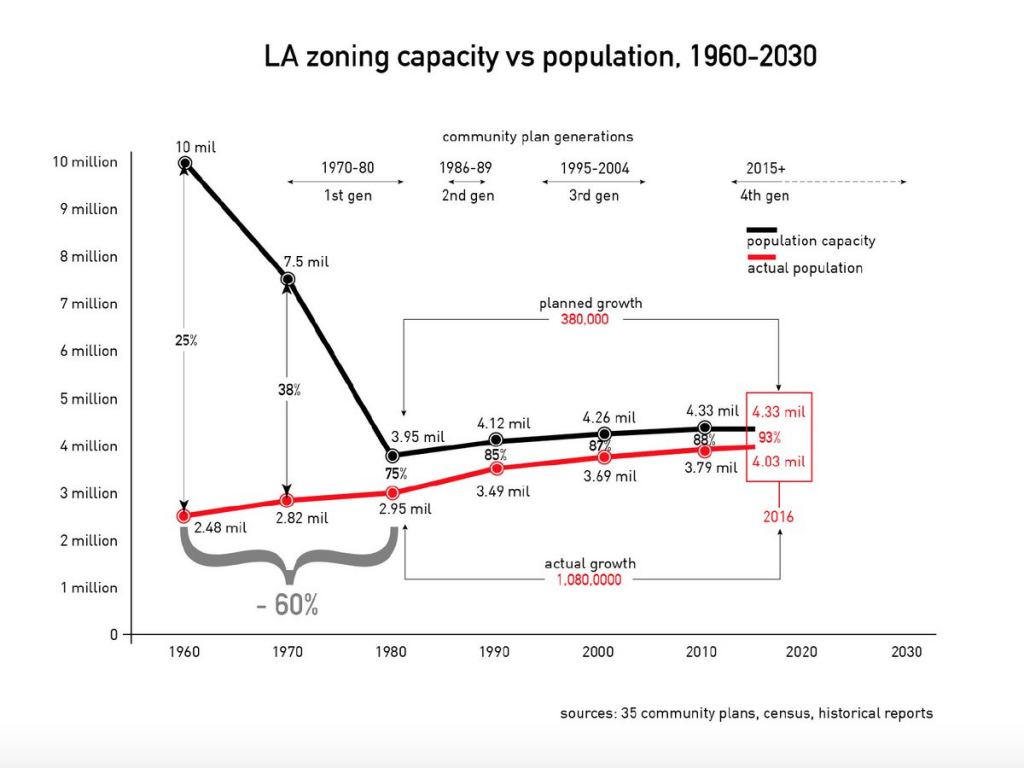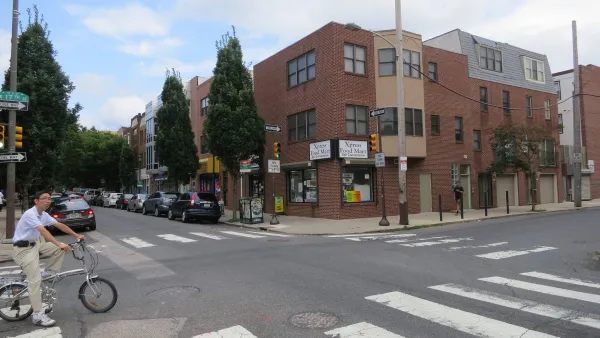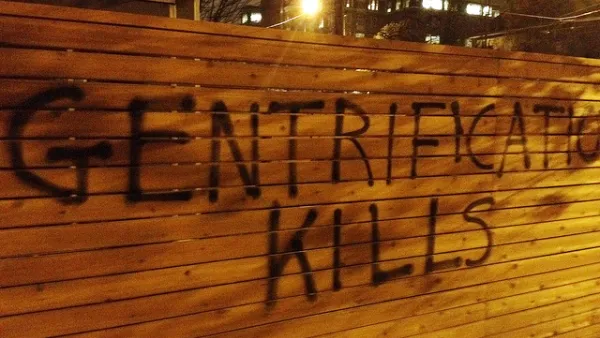New research helps explain why urban housing prices are escalating and how communities can increase affordability. It emphasizes the need to upzone sufficient urban land to create a large competitive market for parcels ready for infill development.

A new study by UCLA Professor Shane Phillips, Building Up the "Zoning Buffer": Using Broad Upzones to Increase Housing Capacity Without Increasing Land Values, emphasizes the need to maintain sufficient zoning buffer—the gap between the existing housing stock and the maximum number of homes allowed by current zoning—to increase housing affordability.
Phillips' research indicates that urban housing prices have risen because cities have downzoned, reducing the supply and driving up the price of parcels suitable for infill. For example, in 1960 Los Angeles had the zoning capacity to grow its housing stock by 300 percent; by 1980, this had fallen to 34 percent, declining to just 7 percent by 2016, as illustrated below. Downzoning did not stop population or employment growth, but it did reduce opportunities for additional housing. Over time, this shortage created our present-day housing crisis.

To combat this, many cities are upzoning to allow higher-density housing, usually in targeted locations such as along arterials or near transit stations. While this strategy may increase housing production in those areas, it can lead to higher land prices that erode the affordability of new homes. This study examines how the zoning buffer affects land values and the production and affordability of housing.
When zoning buffers are small, land with redevelopment potential remains scarce, and small-scale upzoning will cause land value increases that are largely captured by incumbent property owners. Larger-scale upzoning can create a large zoning buffer, reducing the scarcity of land with redevelopment potential, so property owners lack the leverage to demand more from a developer than a typical homebuyer. This allows developers to replace single-family houses with multiplexes, townhouses, and other types of multifamily housing, resulting in more moderately-priced development and lower housing prices.
Based on this analysis, Phillips argues that local or regional housing affordability can only be achieved through “broad upzoning,” defined as significant density increases on 25% to 50% of land in an area.
This study contributes to our understanding of why urban housing prices are escalating and how communities can increase affordability. It emphasizes the importance of scale—the need to upzone sufficient urban land—to create a large competitive market for parcels ready for moderately-priced infill development.

Analysis: Cybertruck Fatality Rate Far Exceeds That of Ford Pinto
The Tesla Cybertruck was recalled seven times last year.

National Parks Layoffs Will Cause Communities to Lose Billions
Thousands of essential park workers were laid off this week, just before the busy spring break season.

Retro-silient?: America’s First “Eco-burb,” The Woodlands Turns 50
A master-planned community north of Houston offers lessons on green infrastructure and resilient design, but falls short of its founder’s lofty affordability and walkability goals.

Test News Post 1
This is a summary

Analysis: Cybertruck Fatality Rate Far Exceeds That of Ford Pinto
The Tesla Cybertruck was recalled seven times last year.

Test News Headline 46
Test for the image on the front page.
Urban Design for Planners 1: Software Tools
This six-course series explores essential urban design concepts using open source software and equips planners with the tools they need to participate fully in the urban design process.
Planning for Universal Design
Learn the tools for implementing Universal Design in planning regulations.
EMC Planning Group, Inc.
Planetizen
Planetizen
Mpact (formerly Rail~Volution)
Great Falls Development Authority, Inc.
HUDs Office of Policy Development and Research
NYU Wagner Graduate School of Public Service



























